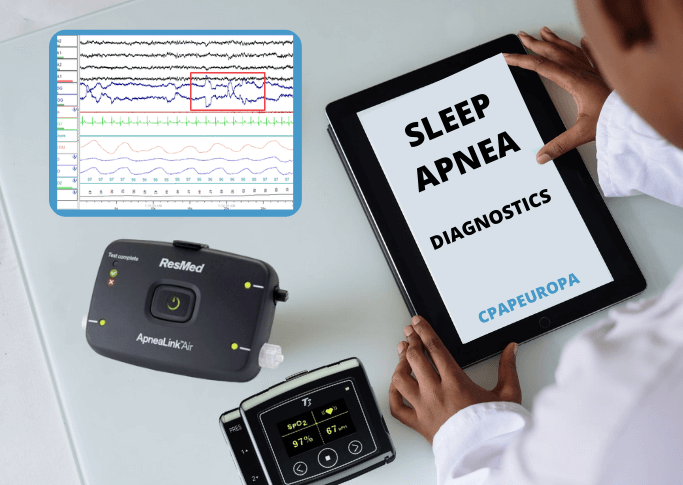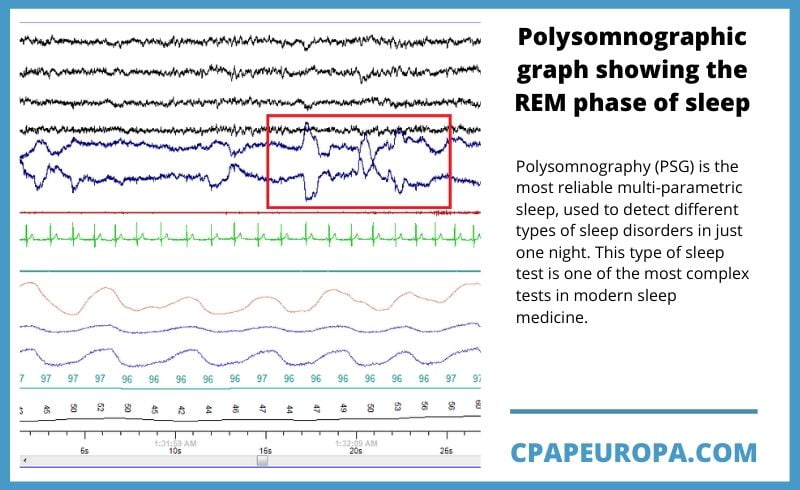
Polysomnography (also called a sleep study test) is the main and most accurate sleep apnea test to date, capable of detecting different types of sleep disorders in just one night. This type of sleep test is one of the most complex tests in modern sleep medicine, although for the patient being tested the test itself is conducted without any inconvenience or complications.
Being a sleep study, polysomnographic testing is capable of identifying almost all types of sleep disorders the patient might have. Hence it is often considered the gold standard in somnology as it provides a clear picture on what the patient is experiencing during sleep – for example snoring, apnoeas, REM-bahavioral disorder or narcolepsy – one of the most serious sleep disorders.
How is polysomnography performed?
The test is conducted in a clinical settings environment, with the patient staying for night at place while being monitored by a sleep specialist who monitors his therapy on a screen all night. All abnormal activities are hence recorded and anaylised in real time. In the morning, the doctor (somnologist) analyses the data again and provides details to the patient.

What can polysomnography (PSG) detect?
As a multi-parametric sleep study, PSG detects the following:L
- Brain activity (electroencephalogram – EEG);
- Rapid eye movement (electrooculogram – EOG);
- Abnormal muscle electrical activity (electromyogram – EMG);
- Cardiac activity (electrocardiogram – ECG);
- Oxygen saturation and pulse (pulse oximetry);
- Lower limb movement;
- Body position;
- Respiratory effort;
- Respiratory flow;
- Snoring.
Sleep apnea (both obstructive and central types) can be easily detected during polysomnography testing. The screening picks up the physiological signals and apneic events during the night through special screening equipment attached to the sleeper. In addition to that, the polysomnographic testing is aided by video surveillance using a night vision camera tracking the sleeper.
Typical polysomnographic diagnostic tools for sleep monitoring
Preparation
Polysomnographic examination is conducted when it is convenient for the patient and they are ready to be spend a night in the sleep clinic, where they will spend the night during the test. Patients are allowed to bring their personal pillow from home. Preparations for the test are minor and may include:
- Cleaning and properly drying the hair of the patient;
- Removing any acrylic nails and polish from the index fingers;
- Avoiding afternoon naps in the day of the study;
- Maintaining the normal diet to avoid influencing the sleep pattern and results of the test;
- Taking the usual daily medications if there are any.
Polysomnography is a completely painless and non-invasive procedure that does not hold any serious risks for the patient. The only inconvenience is that you don’t get to spend the night in your own bed and that some skin irritation may occur because of the sensors attached to your body during the test.
Conclusion
Polysomnography is one of the most valuable studies in sleep medicine, giving the most comprehensive and objective multi-parametric test measuring both the quantity and quality of sleep of the examined patient. This modern day sleep diagnostic tool allows the doctors to pinpoint with uttermost precision when each sleep phase of sleep begins and ends.
In addition, polysomnography allows the identification of almost all sleep diseases, and is therefore considered the “gold standard” in somnology. It can be used to determine if the patient is snoring, gnashing his teeth, if he has sleep apnea, if he has narcolepsy, or some kind of parasomnia – sleepwalking, REM-behavioral disorder, etc., whether there are periodic movements of the lower legs. limbs or other unusual activities while sleeping.

